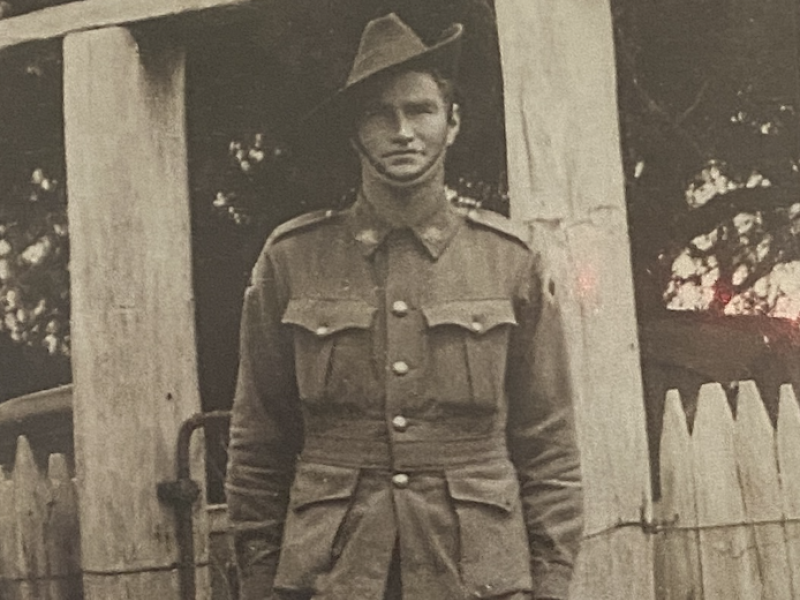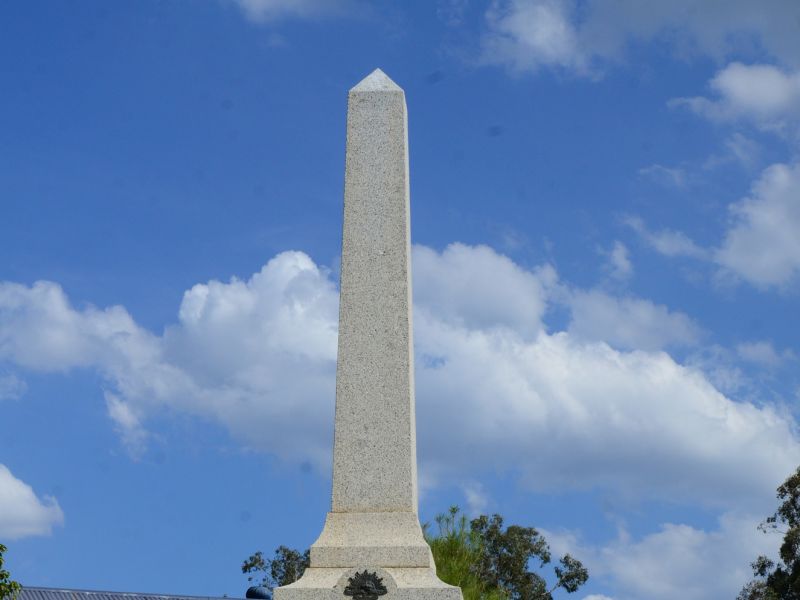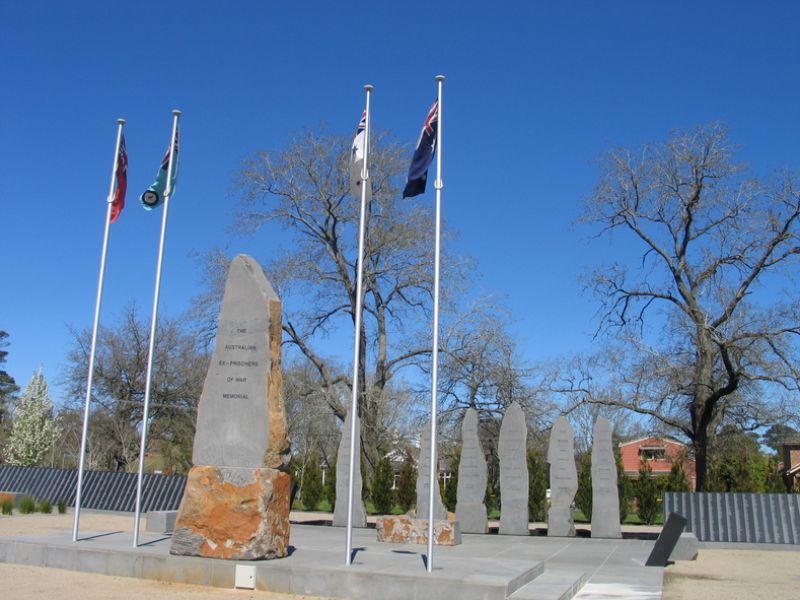Joseph Douglas (Doug) Smedley
Doug was born in Corryong on the 3rd of June, 1916. He was the fifth son of Henry and Adeline Jane (née Nichol).
In the late 1930’s, Doug’s brother, Les, and Doug purchased a farm together as young men in their early twenties in Berringama, Victoria. They both shared the dream of a better life. (After Doug’s death Les would be appointed the executor of Doug’s Last Will and Testament.)
Doug enlisted on the 26th of May, 1940, one week short of his 24th birthday, at Caulfield, Victoria, being allocated the Army Number VX42361. One week later he was posted to No. 3 Training Depot of the A.A.M.C. (Australian Army Medical Corp) at Bendigo, Victoria. Just after a little over three weeks he was transferred to the 2/23rd Battalion, 26th Australian Infantry Brigade, at No. 4 Training Battalion, based at the Albury Showgrounds. The people and Town Council of Albury expressed the wish that the 2/23rd Battalion be given the title of “Albury’s Own”. It was accepted by the then commanding officer Lieutenant-Colonel Evans. On the 27th of July, Doug was transferred to the Albury Hospital. He would remain here until the 20th of August, although the reason for his hospital stay is not recorded.
On the 25th of September the battalion moved from Albury to the new training establishment built at Bonegilla, just over the border on the outskirts of Wodonga. During his time here, Doug would have gone through extensive training in areas such as weapons, physical fitness and fieldcraft. It was mid-November when the battalion embussed at Bonegilla at 0300 hours to drive to the Wodonga Railway station to then entrain for their journey down south. The train arrived in Melbourne at 1000 hours and proceeded straight to the Port of Melbourne pier. The men embarked on HMT Strathmore and by 1015 hours the following day they had cleared the rip at the Heads and headed west.
That afternoon the Strathmore was joined by HMT’s Orion and Batory with HMAS Adelaide joining them as escort. The following day HMAS Perth took over as escort. After a short stop over at Fremantle, WA, the escort was once again changed and two Australian cruisers Perth and Canberra took over. Just before reaching Colombo, HMAS Canberra was relieved by HMS Capetown. The troopship entered the Suez Canal on the 16th of December and, on the following day, the troops experienced firm earth when they disembarked at El Kantara, Egypt. The 2/23rd Battalion, along with other units of the 26th Brigade and the rest of the 9th Division, completed their training here.
Three days after Christmas Day, Doug was evacuated to the No. 1 Australian Stationary Hospital at Damira, although, once again, the reason is not listed. Doug would rejoin his unit on the 17th of January, 1941.
March of 1941 was one of much movement for the battalion. It left Palestine on the 13th of March and made the long and dusty journey to Libya. Here the battalion split up into various detachments and took over the whole of the duties connected with the Tobruk Base sub-area. It is quite possible that this explains the “detached for Special Duties” entry in Doug’s service record. On the morning of the 16th of May, the 2/23rd prepared to relieve the 2/43rd Battalion in the eastern sector of the Tobruk salient. Unfortunately, during the previous night, German forces had taken posts S8, S9 and S10. The 2/23rd was given half an hours notice to be ready to retake those posts. The following day would become a day of tragedy, for both the 2/23rd Battalion and the Upper Murray. Not only was Doug taken as a prisoner of war during the battle, but four men from the area would pay the supreme sacrifice: James Evans, John Johnson, John Joy and Alan Kelly would all be killed in action in Tobruk on this day.
The next information we have of Doug is on the 13th of August, which tells of him being at a POW Camp at Derna, 150 km north-west of Tobruk, Libya. Doug is transferred to two other transit camps before arriving at Campo 57 PM in Grupignano near Voline in north-east Italy. Reports indicate that conditions in the camp were extremely harsh, thanks to the commandant of the camp, Colonel V. E. Calcaterra. Food was poor, housing was overcrowded and insanitary. Doug remained here until he was transferred to Campo 106 on the 10th of April, 1943. This camp consisted of a collection of farms around Vercelli in the north-west of Italy. POW’s incarcerated here assisted with the farmwork and the harvest between Turin and Milan.
On the 8th of September, 1943, Italy surrendered. POWs had three choices. The first was to stay in camp and wait for the Allied armies to reach them. However, if they stayed then they could have been collected by the Germans and sent to POW camps in other areas of occupied Europe. The second choice was to leave the camp and try to reach Allied lines in the south or Switzerland, in the north. A third choice was to leave camp and join the Italian resistance movement until Allied forces reached them. Doug chose to escape from the camp and hide with other escapees, waiting for their opportunity to reach Switzerland.
The winter of 1943/44 was severe and many escapees relied on the support of the Italian people for food and shelter. Doug was part of a group of eight escaped POWs. It’s known that two were New Zealanders (George Batt and Jack Clark), another two were indigenous diggers (Eddie Albert and Jim Brennan), and one was an Englishman (Eric Hamblin). The group were being hidden by two sisters, Eva Cerruti and Elma Acquadro, in a clump of unoccupied farm buildings near San Giuseppe on Castro. The POWs had been told to be careful as the area was being searched by Fascist spies, informers, bounty hunters and the GNR (Monotbello National Republican Guard). Even though Italy had surrendered, many Fascist troops and believers refused to capitulate.
Early in the morning of the 24th of April 1944, Jim Brennan was woken by the sound of machine gun fire. There are various reports as to what happened, depending upon which side of the gun you were on. A war crimes investigating officer, Sergeant Rondel, documented that Doug Smedley, George Batt and Jack Clark had come out of the door of the building after three of the search party had entered. One of the searchers waiting outside fired a burst of machine gun fire at them. The other three searchers came out of the farmhouse and fired on the already wounded men. A local retired doctor examined the bodies and came to the conclusion that some of the wounds were caused by means other than a gun.
After the war, one of the fascist guards was given a twelve year goal sentence, another was executed as an Italian War Criminal, while a third, and two siblings who had informed on the prisoners, were executed by partisans before they could be tried in a court of law. It has been estimated by the UK Ministry of Defence that approximately 50,000 Allied POW’s were transferred to camps in German occupied countries after Italy surrendered. A further 11,500 escaped by risking a perilous crossing of the Alps into Switzerland or getting through German lines to reach Allied lines. These men would not have survived if it hadn’t been for the assistance of the Italian civilians, who risked certain death had they been caught.
Doug, George and Jack were initially buried in the Tavigliano Cemetery, however, after the war their bodies were reinterred in the Milan War Cemetery in Italy.
In 1974 a plaque was erected at the Tavigliana cemetery, which included the names of the three executed POWs. Translated from Italian it reads; ”It does not matter if the wind of time fades, our names of the partisan dead written on the marble remains - well engraved in our hearts - today, tomorrow and always love freedom.”
Doug is also remembered at the Tavigliana Cemetery, Italy, the Yininmadyemi Memorial in Sydney, the Australian War Memorial Roll of Honour, the Ballarat Australian Ex-Prisoners of War Memorial, and the Corryong War Memorial. For his service, he was awarded the 1939-1945 Star, the Africa Star, the Defence Medal, the War Medal 1939-1945 and the Australian Service Medal 1939-1945.
Lest we forget

 Stephen Learmonth
Stephen Learmonth
